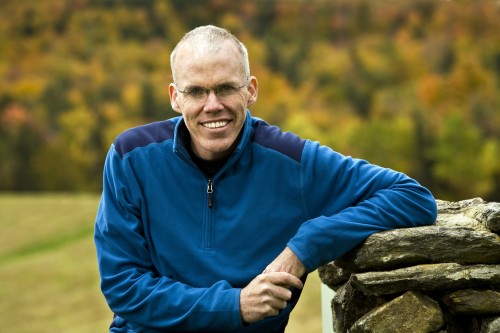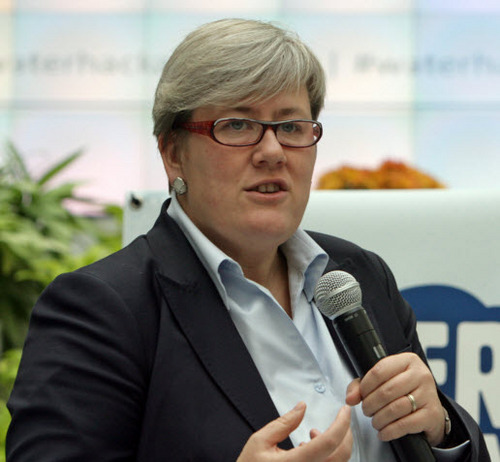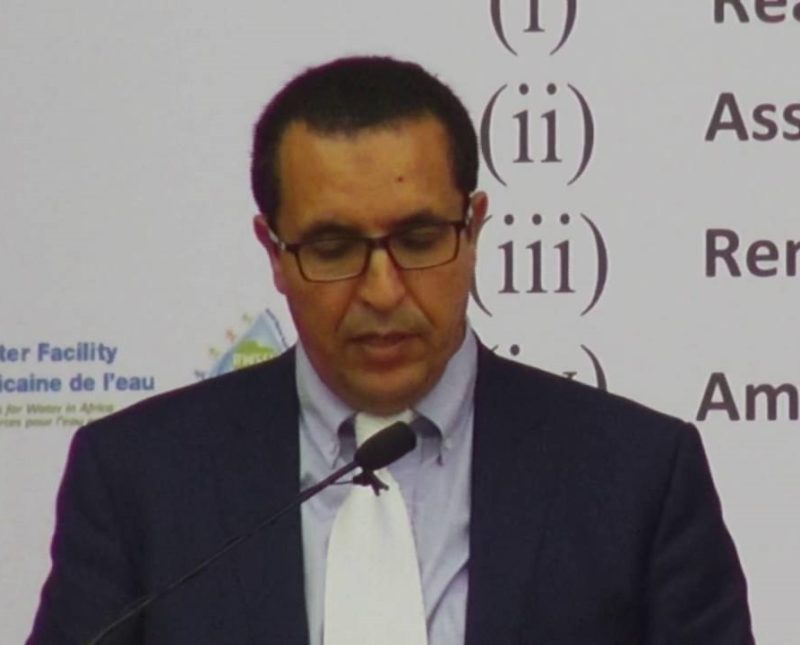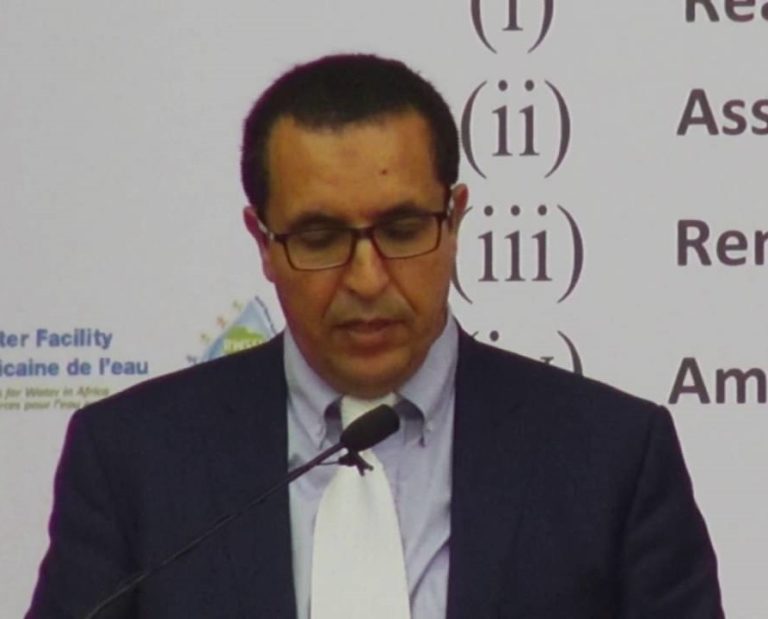Career schools: Necessity of educational flexibility (2)
The necessity of career colleges is crucial to development of the socio-economy of any country, especially the developing ones, like ours, because career colleges provide students with options based on not only “what they learn” but “how they learn”. In my opinion, one of the sectors of millennium development is to refocus and re channel resources back to energising and supporting educational forums and effort that will dramatically and successfully increase students’ interest in education, which will in turn increase enrollments and academic achievements.

In my opinion, to begin tackling the problem of retaining students in both traditional schools and career colleges, we need to review, ask and proceed to answer two simple questions…. “Why are they not coming?” and when they come “Why don’t they stay?” why is there a high dropout rate before completing school. There are numerous reasons, including the difficulty of getting to school, the cost of schooling, class room engagement, keeping students interested, some kind of hope for future utilisation of knowledge acquired, etc. Even when tuition is free, there are often other expenses necessary for general welfare, such as lunch, projects, uniforms, examination fees, etc. And because the quality of education in developing areas, like ours is often poor, parents are forced to pay for additional tutoring to enable their children to pass tests (that is if they can afford it). Opportunity costs may be even larger – while they are in school, children forego opportunities to produce income working on the family farm or selling in the marketplace. It is not surprising that when education investments do not result in adequate learning, or even basic literacy and numeracy or even any future hope of doing something tangible with the proposed knowledge, parents do not keep their children in school.
Even when learning outcomes are adequate, very few students continue on to secondary school, not to talk of pursuing higher education. Job prospects for most people in the developing world are poor, and staying in school past grade 5, or even through grade 10, does not improve them significantly. In impoverished regions, the vast majority will not secure formal employment and will be supported primarily through subsistence level agriculture and trading.
Educational programmes typically adopt traditional Western models of education, with an emphasis on maths, science, language, and social studies. These programmes allocate scarce resources to topics like Greek mythology, prime numbers, or tectonic plate movement – topics that may provide intellectual stimulation, but have little relevance in the lives of impoverished children. High performing students in less developed regions face a much different future from their counterparts’ in wealthier areas. There are no higher levels of schooling or professional job opportunities awaiting most of these children; they will likely end up working on family or neighborhood farms or start their own small enterprises, with little room to grow or sustain their businesses.
Schooling provides neither the financial literacy students will need to manage the meager resources under their control, nor the guidance needed to create opportunities for securing a livelihood or building wealth. In addition, schooling provides little assistance to promote the physical health needed for economic stability and quality of life. The truth is that life expectancy is low in impoverished regions, and not just because of lack of quality medical care.
I fervently believe that what students need in all regions are not necessarily, lengthened educational programmes or more academic skills, but rather life skills that enable them to improve their financial prospects and well-being. These include: financial literacy and entrepreneurial skills; health maintenance and management skills; and administrative capabilities, such as teamwork, problem solving, and project management.
As an educationalist, my focus for the past six years has been to help refocus the attention of the government, non-government, private schools, teachers, parents and children back to education versus the prominent entertainment world and aspirations. Based on the state of education in developing countries like ours, there is an unquestionable need for scholars and educationalists to rise and form an alliance that will provoke our children to yearning for more knowledge, acquire skills, and with the end goal of serving their communities with the skills acquired. It is also important that we implement training for illiterate adults in developing countries, like ours, this will help balance the front and back end of our most invaluable resource, which is “Our People”, leveraging the utilisation of skilled human capital, with the anticipated outcome of positively impacting our socio economic status and our growing relevance in the global market. My experiences in western educational operation and the current educational thirst and dryness, have convinced me that the time is right to redefine quality education in Nigeria.
In Volume III, I will introduce you to an effective educational model called: “Living Education.”
By Laide R. Alexander (Houston, Texas, United States of America)
Climate change disrupting nature from genes to ecosystems
Global changes in temperature have already impacted every aspect of life on Earth from genes to entire ecosystems, with increasingly worrying consequences for humans, according to a new study co-authored by the IUCN (International Union for the Conservation of Nature) Species Survival Commission’s Climate Change Specialist Group (SSC CCSG), and published in a recent edition of Science.

The IUCN is a membership union composed of both government and civil society organisations. It provides public, private and non-governmental organisations with the knowledge and tools that enable human progress, economic development and nature conservation to take place together.
The SSC CCSG study found that more than 80% of ecological processes that form the foundation for healthy marine, freshwater and terrestrial ecosystems – such as changes to genetic diversity or seasonal migration – are already showing signs of distress and altering as a response to climate change.
“The extent to which climate change is already wreaking havoc with nature is simply astounding,” says IUCN Director General Inger Andersen. “These findings send a very clear message to world leaders gathering for climate change negotiations in Marrakech: cutting greenhouse gas emissions and protecting the ecosystems on which we depend is an urgent matter of self-preservation.”
The study analyses 94 ecological processes, as documented in peer-reviewed literature.
Many of the climate change impacts on species and ecosystems affect people, according to the authors, with consequences ranging from increased pest and disease outbreaks, reduced productivity in fisheries, and decreasing agricultural yields.
Changes in ecological processes may also compromise the capacity of ecosystems to help us mitigate and adapt to climate change, the authors warn. Healthy ecosystems contribute to climate mitigation and adaption by sequestering substantial amounts of carbon, regulating local climate and reducing risks from climate-related hazards such as floods, sea-level rise and cyclones, the report states.
“We now have evidence that, with only a ~1oC of warming globally, major impacts are already being felt,” says study lead author Dr Brett Scheffers, member of the IUCN Climate Change Specialist Group and assistant professor at the University of Florida. “These range from individual genes changing, significant shifts in species’ physiology and physical features such as body size, and species moving to entirely new areas.”
When a large number of processes are all impacted within a single ecosystem, they scale up to produce what researchers call ecological regime shifts – where one ecosystem state shifts to an alternative state. This can be seen in kelp forests that have turned into rocky barrens in temperate seas. On land and in the oceans, many ecosystems are becoming unrecognisable, with Arctic tundra ecosystems becoming dominated by boreal and temperate organisms, and temperate marine ecosystems becoming dominated by tropical organisms.
However, the study also points to hope as many of nature’s responses to climate change could be used to inform human adaptive measures. For example, improved understanding of the adaptive capacity in wildlife can be applied to our crops, livestock and fisheries. This can be seen in crops such as wheat and barley, where domesticated varieties are crossed with wild varieties to maintain the evolutionary potential of crops under climate change.
“This study has strong implications for global climate change agreements,” says co-author Dr Wendy Foden, Chair of the IUCN SSC Climate Change Specialist Group, based at the University of Stellenbosch, South Africa. “Countries’ current commitments reduce global temperature rise to around 3oC, but we’re showing that there are already serious impacts right across biological systems at 1oC. If we’re going to keep natural systems delivering the services we rely so heavily on, it’s imperative that we step up our efforts.”
“We are simply astonished at the level of change we observed, which many of us in the scientific community were not expecting for decades,” says senior author Dr James Watson from the University of Queensland and World Conservation Society, member of the IUCN Climate Change Specialist Group. “It is no longer sensible to consider this a concern for the future and if we don’t act quickly to curb emissions it is likely that every ecosystem across Earth will fundamentally change in our lifetimes.”
Why seabirds keep mistaking ocean plastic for food, by study
Each year, millions of tons of plastic waste end up in the ocean, where it often goes straight into the bellies of hungry birds, sea turtles and other marine animals. This is a big concern for scientists, who are still investigating the possible consequences for the marine ecosystem – but until now, researchers weren’t completely sure why so many animals were mistaking the plastic for food in the first place.

A new study, just out in the journal Science Advances, may shed some light on the mystery. The study finds that plastic in the ocean gives off a specific chemical compound with a distinctive smell, signaling to some seabirds that it’s dinnertime.
“What we think is going on is that the plastic is emitting a cue that is getting (the birds) into moods to eat,” said Gabrielle Nevitt of the University of California Davis, the study’s senior author.
Scientists already knew that some types of seabirds rely heavily on their sense of smell, rather than just their vision, when foraging for food. Nevitt’s previous research has focused largely on a group known as the procellariiform seabirds, which include albatrosses, petrels and shearwaters. Previous research has found these birds are especially responsive to a chemical compound called dimethyl sulfide, or DMS.
In nature, DMS is produced by algae – especially when it’s being broken down and eaten by krill. There’s an evolutionary purpose to this system that benefits both seabirds and algae.
When the the algae emit the chemical, they’re “engaging in sort of a mutualistic interaction,” said Matthew Savoca, a Ph.D student at UC Davis and the study’s lead author. “The algae says, ‘Birds, come over here and find food,’ and the birds say to the algae, ‘Thank you very much, we’re now going to eat your predators and reduce your grazing pressure from the krill.’ ”
The problem is that plastic in the ocean tends to accumulate algae and other organic matter on its surface in a process known as “biofouling” – and this material emits DMS, the new study found.
The researchers filled mesh bags with three of the most common types of plastic debris – high-density polyethylene, low-density polyethylene and polypropylene – and attached them to buoys in the ocean. After three weeks, the researchers collected the bags for analysis.
Back at UC Davis, they turned to food and wine chemist Susan Ebeler’s lab for help. The lab supplied equipment usually used to detect sulphur in wine, which the researchers then used to analyse their plastic samples. They found a DMS signature on all the plastic that had been in the ocean. On the contrary, they did not detect any DMS when they tested plastic that hadn’t been soaked in the sea.
Next, the researchers pooled data from previous research on plastic ingestion in seabirds. They found that birds known to be responsive to DMS consumed plastic five times as frequently as non-DMS-responsive species.
The researchers decided to expand their study even further. Previous research has suggested that DMS-responsive species often tend to build their nests underground, while many other species nest on the surface. So the researchers decided to see what would happen if they analysed previously collected data on plastic ingestion in burrowing versus non-burrowing seabirds. They found that burrow-nesting birds were also significantly more likely to ingest plastic than surface-nesting birds.
These results have several important implications, according to the researchers. First, the study provides new insight into the mechanisms causing certain marine animals to eat plastic waste – and it likely applies to more than just seabirds. Some research has indicated that other animals, including fish and sea turtles, also use DMS or other chemicals as feeding cues, Nevitt said.
The research also suggests that some of the species most vulnerable to plastic pollution may have been overlooked until now. Burrowing seabirds have not been the most heavily monitored up until this point, Savoca pointed out – largely because they spend so much time hidden underground – but the new study suggests they might be disproportionately affected by plastic waste.
The paper “provides a convincing argument for the Procellariiform seabirds as to why they might pick up plastic from the ocean,” said Chris Wilcox, a senior research scientist at the Commonwealth Scientific and Industrial Research Organisation in Australia, who was not involved with the new study, in an emailed comment to The Washington Post.
However, he added, other species that don’t use DMS for foraging have also shown high rates of plastic ingestion. The reason for this remains an open question. For many species, eating plastic may indeed be a simple visual mistake – it might just look like food. Even in the DMS-responsive seabirds, visual cues may still be playing a part, Savoca noted.
“I think it’s quite possible that these hypotheses are complementary, they really build on each other,” he said. “If something looks like food and smells like food, it would be much harder not to eat it.”
Wilcox also cautioned that a lot of research on the actual effects of plastic consumption, particularly on whole populations of seabirds, remains inconclusive. While many scientists are indeed concerned that plastic might be harming the marine ecosystem, Wilcox pointed out that the new study can’t be used to speculate on the consequences of plastic consumption – only the reasons it’s happening.
That said, the researchers are hopeful that their findings can be used to help stop marine animals from eating so much plastic waste. Recent research has suggested that the problem is only continuing to grow for now. A 2015 study, which was led by Wilcox, predicted that 99 percent of all seabird species – up from about 59 percent now – will be eating plastic by the year 2050.
“(The study) provides a salient mechanism for how this group of birds might be detecting plastic and consuming it,” Nevitt said. “And once you have a better idea of how a mechanism might work, you’re in a better position to potentially mediate that.”
There may be some opportunities for materials scientists and manufacturers to make a difference in the future, Savoca suggested – perhaps by designing plastics that are less conducive to algae growth. But he says the biggest priority should be keeping plastic out of our waterways in the first place.
“Really, (the paper) just adds another layer to how how insidious and bad this plastic problem is,” he said.
By Chelsea Harvey (The Washington Post)
What if Trump pulls the U.S. out of the Paris Agreement?
After Tuesday’s U.S. election upset, climate change watchers and wonks are scrambling to assess what it would really mean if Donald Trump, true to his word, ditches or simply fails to participate in the Paris climate change agreement (which he could do through a variety of mechanisms). And it does indeed appear that the consequences for international diplomacy, and for the planet, would be considerable.

At the centre of the U.S.’s role in that agreement is its ambitious pledge to reduce its greenhouse gas emissions by 26 to 28 percent below their 2005 levels by the year 2025. Presumably, under Trump, we’d no longer see such significant cuts. Indeed, given Trump’s campaign trail talk about firing up the domestic coal, oil, and gas industries, we might even see our emissions increase.
So what would it mean if the U.S. doesn’t hit its Paris target, for whatever reason, due to actions taken (or not taken) under Trump?
According to an analysis shared with the Post by the D.C.-based think tank Climate Interactive (based in part on this analysis here), the effect is actually quite substantial. That’s because a large percentage of the full emissions cuts produced by the Paris agreement come directly from the U.S.’s individual promise to take domestic action, said Andrew Jones, co-director of the group.
“Pulling out of the Paris agreement matters not just in leadership, but also in a direct impact on the climate,” Jones said.
More specifically, Jones explained, Climate Interactive’s analysis finds that the U.S. pledge amounts to the avoidance of 22 gigatons, or billion tons, of carbon dioxide equivalent emissions between the years 2016 and 2030. But all of the pledges, by all of the countries, only amount to the avoidance of a little over 100 gigatons. Thus, the U.S.accounts for around 20 percent of the total, which is not surprising, given the size of the country and the fact that it is the world’s second largest emitter after China.
So what effect would that have on the Paris agreement as a whole? Noticing that one fifth of its emissions cuts have vanished, Jones said, “I think the rest of the world would be less likely to take action on their own part, and do their own share.”
Granted, it is far from certain that a President Trump will be as hostile to the Paris accord as he sounded on the campaign trail – he will have to forge relationships with all these countries that want him to participate in global climate action.
“Governing is different than campaigning,” said David Sandalow, a fellow at the Centre on Global Energy Policy at Columbia University. “The Trump team is about to confront that. Following through on some of his campaign climate statements would come at a cost in terms of his administration’s foreign policy objectives.”
Sandalow added that the U.S. dropping out of the Paris process could be a boon to its other biggest participant in terms of its emissions – China.
“If the U.S. withdraws from the Paris Agreement, that would create a strategic opportunity for China,” Sandalow said. “It would gain credibility globally by sticking with its climate plans even as the U.S. withdraws, helping the Chinese government advance its objectives on a range of topics.”
Meanwhile, it’s not just that Donald Trump’s victory has upended the move towards global climate action – and will likely set the stage for reversal of Obama climate and energy policies at home as well.
The November 8 election also saw the defeat of an initiative in Washington State that would have imposed the nation’s first revenue-neutral carbon tax, assessing a $25-per-ton fee on carbon dioxide emitted in the electricity, transportation, and other sectors and then using that revenue to reduce the state sales tax.
Initiative 732, as it was called, actually saw considerable resistance from the environmental left, which felt that revenues from such a measure should be used to advance other social causes, rather than be returned to taxpayers. By the end, a strange bedfellow allegiance had arisen in which some on the left had effectively joined forces with some fossil fuel interests to oppose the carbon tax, even as many climate scientists and economists supported it.
The tough politics hurt the measure even in Washington State’s populous and very liberal King County, the home to Seattle, where the initiative barely won a majority. In contrast, King voted for Hillary Clinton by 73.9 percent. Statewide, 58.1 percent of Washington voters ultimately said “no” to the carbon tax initiative.
To be sure, in the context of the bombshell election and its broader negative implications for international climate action, the loss in Washington hardly felt significant.
“In the scheme of things it doesn’t really count for much, and I would say that even if it had won, because we’re in for many years of backsliding on climate at a time when we really had to ramp it up,” said Charles Komanoff, director of the Carbon Tax Centre.
By Chris Mooney (The Washington Post)
Cooperation key to solving climate crisis, says report
New report from diverse coalition reveals what governments must do to achieve Paris Agreement goals

As government ministers meet in Marrakech to assess global ambition towards addressing climate change in the near-term, a diverse coalition of social movements, environmental and development NGOs, trade unions, and faith groups on Friday released a startling new report, titled: “Setting the Path towards 1.5°C: A Civil Society Equity Review of pre-2020 Ambition.” The report says the Paris Agreement’s aspirational temperature limit of 1.5°C can only be met if governments take immediate action in the next four years to speed up the pace of cutting emissions.
The report is a follow up to 2015’s “A Civil Society Equity Review”, which assessed countries’ Paris commitments – their pledged emissions reductions post-2020 – against their “fair share” of such reductions, based on each country’s responsibility for causing climate change, and capability to help solve the problem.
“Setting the Path towards 1.5°C” looks at the short term, reviewing countries’ pre-2020 emissions reductions and climate finance pledges. It finds that, in aggregate, developed countries, in spite of having a larger fair share of emissions reductions than developing countries, are offering much lower levels of ambition, while developing countries are much closer to meeting their fair share if they fulfil their most ambitious pledges.
Globally, the report finds that that only 30-44% of the mitigation needed in 2020 to achieve the 1.5°C limit has been pledged. Without much greater levels of emissions cuts in the pre-2020 years, action in the post-2020 years will have to be much more ambitious and costly than is feasible, adds the report.
In fact, the report asserts that, for a scenario in which the world limits overall warming to 1.5°C, many developed countries have fair shares that are larger than could be met domestically. These countries can only meet their fair shares by providing money for additional emissions cuts in developing countries. Only with massive international cooperation – that makes it possible for developing countries to go way beyond their fair shares – can the global climate crisis be solved.
Governments cannot leave Marrakesh without Setting the Path towards 1.5°C
Beyond highlighting the urgent need to increase ambition and cooperation, the report prescribes a comprehensive set of recommendations, many aimed at the ongoing talks in Marrakech, dubbed an “Action COP,” and in particular the High-Level “Facilitative Dialogue” that is supposed to take an honest look into how to beef up the inadequate pre-2020 efforts. Among the recommendations:
- Developed countries must deliver their fair share of public climate finance to enable transformation across all sectors in the effort to limit warming to 1.5°C, and help communities adapt to even that degree of warming.
- G20 governments must take action now to phase out fossil-fuel production subsidies, and terminate public support for fossil exploration.
- Bilateral and multilateral support for energy development must prioritise access to affordable, reliable, sustainable and modern energy.
- Governments must increase the national targets to reduce emissions that they submitted before Paris.
- A renewable energy partnership should be established to spur a race to the top; organise an ambitious and properly financed system to resource global renewable energy initiatives; and organise similar partnerships across other sectors, such as public transport, housing and agriculture.
- All sectors of society must be engaged in these efforts, including women, workers, youth, indigenous peoples, local communities, and migrants.
The following groups, organisations and movements are signatories to the 2016 Report “Setting the Path Towards 1.5°C: A Civil Society Equity Review of Pre-2020 Ambition.”
International
Center for International Environmental Law (CIEL)
Corporate Accountability International.
Friends of the Earth International
Global Catholic Climate Movement
International Trade Union Confederation (ITUC)
Regional
Asia Pacific Forum on Women, Law and Development
Asian Peoples Movement on Debt and Development
Catholic Youth Network for Environmental Sustainability in Africa (CYNESA)
Climate Action Network South Asia
Horn of Africa Regional Environmental Network
Pan African Climate Justice Alliance (PACJA)
South Asia Alliance for Poverty Eradication (SAAPE)
South Asia Food Sovereignty Network
South Asia Peasants Coalition
Young Friends of the Earth Europe
Africa
Actions en faveur de l’Homme et de la Nature, Côte d’Ivoire
Climate & Sustainable Development Network of Nigeria
Energy Democracy Initiative, South Africa
Health of Mother Earth Foundation (HOMEF), Nigeria
Institute for Economic Research on Innovation, South Africa
Ivory Coast Climate Change Network – PACJA Chapter
Labour, Health and Human Rights Development Centre, Nigeria
Pesticide Action Network (PANeM), Mauritius
Project 90 by 2030, South Africa
Reseau sur le Changement Climatique RDC; DR.Congo Climate Change Network (RCC-RDC)
Uganda Coalition for Sustainable Development
Aksi! for gender, social and ecological justice, Indonesia
Aksyon Klima, Philippines
All Nepal National Free Student Union (ANNFSU)
All Nepal Peasants Federation
Archdiocese of Manila Ministry on Ecology-national, Philippines
Beyond Beijing Committee (BBC), Nepal
Campaign for Climate Justice Nepal
Campaign for Good Governance (SUPRO), Bangladesh
Catholic Stewards of Creation, Philippines
CEED – Center for Ecology and Economic Development, Philippines
Center for Disaster Preparedness, Philippines
Center for Environmental Justice (CEJ) / Friends of the Earth Sri Lanka
Center for Socio-Economic Research and Development Nepal (CERDN)
Centre for Technology and Development, India
Coastal Association for Social Transformation (COAST), Bangladesh
Coastal Women’s Movement, India
Ecology Collective Association, Turkey
Environmental Protection Society Malaysia
Equity and Justice Working Group Bangladesh (EquityBD)
Freedom from Debt Coalition, Philippines
Indian Social Action Forum – INSAF
Jagaran Nepal
Koalisi Rakyat untuk Hak atas Air (KRUHA), Indonesia
Madani – Indonesia
National Women Peasants Association, Nepal
National Women’s Movement, India
Nepal Youth Peasants Association, Nepal
Pambansang Koalisyon ng Pabahay, Philippines
Partnership for Clean Air (PCA), Philippines
Philippine Movement for Climate Justice (PMCJ)
Philippine Rural Reconstruction Movement (PRRM), Philippines
Rural Reconstruction Nepal (RRN)
Task Force Detainees of the Philippines (TFDP)
Tax and Fiscal Justice Alliance – Nepal (TFJAN)
Tax and Fiscal Justice Alliance, Nepal
Women Welfare Society (WWS), Nepal
Europe
Amigos de la Tierra – Friends of the Earth Spain
An Taisce – The National Trust for Ireland
Climate Revolution, United Kingdom
HELVETAS Swiss Intercooperation
Jordens Vänner – Friends of the Earth Sweden
Maan ystävät ry – Friends of the Earth Finland
Milieudefensie – Friends of the Earth Netherlands
Naturvernforbundet – Friends of the Earth Norway
Oil Vay: Jewish Climate Action Network, United Kingdom
Oxford Climate Policy, United Kingdom
Right to Remain, United Kingdom
Stop Climate Chaos Coalition, Ireland
United Kingdom Without Incineration Network (UKWIN)
Asociacion Ambiente y sociedad, Colombia
Engajamundo, Brazil
Movimiento Ciudadano frente al Cambio Climático – MOCICC, Perú
Association québécoise de lutte contre la pollution atmosphérique (AQLPA), Canada
Canadian Interfaith Fast for the Climate
Canadian Unitarians for Social Justice
Canadian Voice of Women for Peace
Canadian Youth Climate Coalition
Center for Biological Diversity, United States
Church World Service, United States
Climate Action Network Canada – Réseau action climat Canada
David Suzuki Foundation, Canada
Development and Peace – Caritas Canada
Earth in Brackets (EIB), United States
ENvironnement JEUnesse, Canada
Institute for Agriculture and Trade Policy, United States
Institute for Policy Studies, United States
Physicians for Social Responsibility- Philadelphia, United States
Sierra Youth Coalition, Canada
Sustainability and Education Policy Network, Canada
The Alabama Center for Rural Enterprise (ACRE), United States
The Climate Justice Project, United States
Transition Initiative Kenora, Canada
Windfall Ecology Centre, Canada
World Federalist Movement – Canada
Aotearoa New Zealand Human Rights Lawyers Association
Blacktown & District Environment Group, Australia
Climate Action Monaro, Australia
Climate and Health Alliance, Australia
Climate Change Balmain-Rozelle, Australia
Climate Justice Program, Australia
Human Rights Foundation Aotearoa New Zealand
New Zealand Climate Action Network
New Zealand College of Public Health Medicine
OraTaiao: New Zealand Climate & Health Council
Energy leaders accelerate climate action
With the Paris Climate Agreement having just come into force, leaders from a wide range of sectors are coming together on Energy Day at the UN Climate Change Conference in Marrakech (COP22) to demonstrate action on global efforts to decarbonise energy systems.

Energy Day is being jointly organised by the International Renewable Energy Agency (IRENA) and Sustainable Energy for All (SEforALL), in cooperation with the Moroccan Agency for Sustainable Energy (MASEN) and the Moroccan Agency for Energy Efficiency (AMEE), as part of a series of thematic days – hosted by the Climate Champions – and held under the auspices of the COP22 Presidency.
The Paris Agreement set urgent climate action firmly in the context of sustainable development, with conversations on Friday focusing on how the world achieves the Sustainable Development Goal Number 7 (to ensure access to affordable, reliable, sustainable and modern energy for all), and secure universal access to affordable, reliable, sustainable and modern energy that can connect the current 1.1 billion people in the world who have little or no access to electricity, and the 2.9 billion people that still rely on smoky, dangerous solid fuels for cooking and heating.
Discussions and commitments made throughout the day include:
- Announcements from the RE100 and EP100 initiatives
- Pre-launch commitments to “One for All” – a global campaign to be launched in early 2017 that seeks to mobilise new forms of capital and new investors to end energy poverty before 2030.
- Developments in the Small Island Developing States (SIDS) Lighthouses Initiative, launched in Paris last year aimed at supporting islands in the transformation of their energy systems.
- Developments related to the Africa Renewable Energy Initiative (AREI)
- The remarkable renewable energy transformation of Morocco, this year’s COP hosts.
“Closing the energy gap offers us one of the greatest economic opportunities of our lifetime,” said Rachel Kyte, CEO and Special Representative of the UN Secretary-General for Sustainable Energy for All (SE4ALL). “In 2016, the world needs an energy system that allows universal access, supports new jobs and meets our aspirations of a just, fair future for all. To achieve this, promises made must be promises kept.”
“The climate objectives agreed in Paris require nothing less than the radical decarbonisation of the global economy,” said Adnan Z. Amin, IRENA Director-General. “Transitioning rapidly to a future fuelled by renewable energy, combined with improving energy efficiency, is the single most effective way to stave off catastrophic climate change while providing citizens with a better quality of life. But the pace and scale of change needs to dramatically increase if we are to fulfil the promise of the Paris Agreement. Governments need to create the necessary policy and finance frameworks to catalyse a groundswell of initiatives, as the private sector develops its own decarbonisation strategies. This is well within our reach.”
New announcements made on Energy Day include:
- New commitments from Dalmia Cement and Helvetia were announced during the press conference, which saw them publicly commit to use 100% renewable power across their operations and join RE100; a global, collaborative initiative with more than 80 of the world’s most influential companies who are working to massively increase demand for – and delivery of – renewable energy.
- Announcements also came from Philips Lighting and Swiss Re who have committed to double their energy productivity and join EP100, a global campaign that works with companies to maximize the economic benefits of every unit of energy they consume.
- The RE100 and EP100 initiatives are designed to work together to provide the least-cost decarbonisation pathway for business, and today three companies – Dalmia Cement, Philips Lighting and Swiss Re – become the first companies to be part of both campaigns led by The Climate Group, in partnership with CDP and the Global Alliance for Energy Productivity.
- Together, RE100 companies are collectively creating over 100TWh of demand for renewable electricity – more than enough to power Morocco three times over. Members speaking today include Alejandro Agag, CEO, Formula E, Kevin Rabinovitch, Global Sustainability Director for Mars, and Bill Weihl, Director of Sustainability, at Facebook. Mr. Rabinovitch announced a new wind power purchasing agreement to power Mars’ Mexican operations.
- A new private-sector led initiative, the Renewable Energy Buyers Alliance (REBA), was also announced – REBA builds connections between corporate electricity demand and renewable energy supply.
- Since COP21, the SIDS Lighthouses Initiative grew rapidly to include 39 States and 19 development partners and developed an innovative island renewable energy support programme. 19 renewable energy projects in the Caribbean were registered on the Sustainable Energy Marketplace, representing an investment volume of $1 billion. Two island States, Antigua and Barbuda and Cabo Verde, were selected to receive funding from the IRENA/ ADFD Project Facility and other co-financiers for a total of $45 million. In addition the UAE have recently announced $50 million for renewable energy projects in the Caribbean States.
Alejandro Agag, CEO, Formula E, stated: “Electric vehicles reach their full potential when coupled with renewable energy charging – which is why all the fully-electric Formula E cars are powered by a revolutionary zero-emission glycerine. The future is electric!”
European Bank commits to support climate-related investment
The European Investment Bank (EIB), believed to be the world’s largest global lender for climate related investment, on Friday in Marrakech, Morocco confirmed its commitment to support climate action and increase the impact of climate related investment in Europe and Africa.

“The European Investment Bank welcomes the ratification of the UNFCCC Paris Agreement less than a year after COP 21, a key step to ensuring that the first-ever legally binding global agreement on climate can enter into force. The EIB recognises the importance of long-term finance to tackle a changing climate and the increasing role of climate finance to drive economic growth. The Paris Agreement has strengthened efforts to unlock more sustainable finance and catalyse greater investment where market innovation, national leadership and international finance all play a crucial role.” said Jonathan Taylor, European Investment Bank Vice President responsible for climate action.
Vice President Taylor confirmed that since COP 21 was convened in Paris the EIB has strengthened the impact of climate related investment worldwide. This includes backing for long-term investment in new sustainable transport, renewable energy and energy efficiency schemes, as well as supporting investment to adapt crucial infrastructure to a changing climate both across Europe and around the world, in Africa, Asia, Latin America and in Europe’s eastern neighbours.
He outlined how the EIB impact of support for climate investment in Europe has been strengthened under the Investment Plan for Europe and how future new lending in countries most impacted by the refugee crisis would also have a strong focus on supporting climate related investment.
Climate action is a key priority for the European Union’s long-term lending institution, the European Investment Bank. In the last five years the EIB has provided more than EUR 90 billion for climate related investment around the world. In 2015 EIB climate finance reached a record high of EUR 20.7 billion and represented 27% of overall financing.
“Transformational projects such as the Noor solar power plant at Ouarzazate and Lake Turkana wind farm in northern Kenya demonstrate how private investment across Africa can be unlocked to strengthen sustainable energy generation. Enabling future climate related investment of this scale and increasing the climate impact of all projects is crucial for successful implementation of the Paris agreement,” added Jonathan Taylor.
Climate related investment approved by the EIB since Paris ranges from zero-energy buildings in Finland, a billion euros for sustainable transport in Paris, construction of mobile breakwaters to protect islands in the Venice lagoon, and one of the world’s largest offshore windfarms, the 84 turbine Beatrice project that will provide sustainable power to an estimated 450,000 homes.
Since the landmark agreement the EIB has also confirmed key climate related investment outside Europe, including expansion of the Cairo Metro and the first metro in the Indian city of Lucknow as well as improving supply of sustainable energy in the small island state of the Maldives.
The EIB is the long-term lending institution of the European Union owned by its Member States. It makes long-term finance available for sound investment in order to contribute towards EU policy goals.
Water takes centre stage at COP22 as Africa showcases success stories
Deliberations at the ongoing COP22 climate conference in Marrakech took a different turn on Thursday as delegates shifted focus to the nexus between water and climate change in celebration of the first Water Day at the COP.

Organised for the first time in the history of UN Climate Change Conferences, the Action Day for Water at the ongoing UN Climate Change Conference in Marrakech (COP22) created through the Global Climate Action Agenda calls for more attention to water as a way of providing solutions to help implement the Paris Agreement.
The action day, which is dedicated to discussing the relationship between water issues and climate change-positioning and to raise its profile in the relevant negotiations, attracted a large number of participants from government delegations, international organisations, civil society and the media.
At the first session which centred on the “Water for Africa” initiative, panellists that included Water and Sanitation Ministers from Morocco, Burkina Faso and Niger as well as the Water and Sanitation Director of the African Development Bank (AfDB), Mohammed El Azizi, identified water as a critical element for successful climate change mitigation, as many efforts to reduce greenhouse gas emissions depend on reliable access to water resources.
Highlighting Africa’s water-related challenges within the climate context, Niouga Ambroise Ouedraogo, Burkina Faso’s Water and Sanitation Minister, regretted that, as much as most impacts of climate change in Africa are linked to droughts, floods and sea level rise, many African states still have problems accessing multilateral funds with no capacity to prepare proposals for bankable projects.
Reiterating AfDB’s commitment to boosting the capacity of African states to access predictable and fast-tracked financing mechanism to cope with climate-induced water stress, El Azizi highlighted the bank’s constant focus on integrated water resources management, improved transboundary integration and planning, and proactive innovative approaches and projects that are assisting African states to adapt to the impacts of climate change.
Some of such projects which cut across all African sub-regions, according to El Azizi, are the Thwake multi-purpose water resources development project in Kenya, which mainstreams climate resilience by improving water security through the construction of dam, irrigation schemes and water supply, the Yaoundé urban drainage project in central Africa, and the Niger Basin HYCOS Project, which promotes effective management of water resources through quality hydrological data and information in west African states.
Others, according to the AfDB water chief who also doubles as the Director of the African Water Facility (AWF), are the detailed plan of the Songwe River Basin Development Programme in Southern Africa, which envisions a conducive environment for transboundary water resources through flood control planning and climate proofing in the Songwe River basin between Malawi and Tanzania,and the Rabat-Cassablanca and Marrakech region projects which involve water transfer from surplus basins to deficit basins in the north African country of Morocco.
At the Global Climate Action Dialogue on Water which rounded off the Water Day celebration, Parties and the non-Parties explored sustainable initiatives on water and socio-economic development, financing mechanism to increase ambitions related to adaptation and mitigation of water field, and Improving knowledge, cooperation and capacity building.
Experts from the World Water Council, World Bank, European Investment Bank, AfDB and the Stockholm International Water Institute prescribed inclusion of water sector projects in every climate action plan. They also laid emphasis on extensive development of banks expertise in water, application of climate safeguards system as well as mainstreaming climate resilience into water projects.
Courtesy: PAMACC News Agency
Faith leaders demand end to fossil fuels investment
Leaders from global faith groups, financial institutions and foundations on Thursday called on sovereign wealth and pension funds to rapidly end trillions in investments related to fossil fuels and invest in renewable energy in line with the Paris Agreement.

The faith leaders met at “Building the Divest Invest Movement with Faiths, Foundations and Finance,” an official side event of the COP22 UN Convention on Climate Change, which began November 7 in Marrakech.
At the event, the COP22 Interfaith Climate Statement was released, with eminent leaders from across faith traditions joining together in a powerful call to action. Signatories include His Holiness the Dalai Lama; Msgr. Marcelo Sánchez Sorondo, Chancellor of the Pontifical Academy of Sciences; Rev Dr. Olav Fykse Tveit, General Secretary, World Council of Churches; Sayyid M. Syeed, Islamic Society of North America; Archbishop Desmond Tutu; and over 220 other faith leaders from around the globe. Other signatories include senior Buddhist, Hindu, Jain, Sikh, Muslim, Eastern Orthodox, Roman Catholic, Anglican, Episcopal, Baptist, Pentecostal, Lutheran, Quaker, Unitarian Universalist, Indigenous and other spiritual leaders.
The Statement included a set of imperatives designed to speed a transition to a low carbon future in a timeframe consistent with the goal of limiting temperature rises to 1.5°C above preindustrial levels. The calls included shifting public finances away from fossil fuels, increasing financing to end energy poverty with renewable energy, and ensuring a just transition that protects human rights and vulnerable communities.
Faith leaders urged their communities for more commitments to divest from fossil fuels and invest in renewable energy, with the Islamic Society of North America (ISNA) releasing a major announcement that it would commit to divest its investments from fossil fuels and encourage its two constituent organisations and five national affiliated institutions to do so as well. This marked the world’s first divestment announcement from a Muslim institution.
“According to Islam’s most basic and fundamental teachings, human beings have been uniquely charged with the great responsibility of being Guardians of the Earth. It goes against the mission of the ISNA to invest in fossil fuel companies whose operations and products cause such grave harm to humanity and to Creation,” said Dr. Azhar Azeez, President of the Islamic Society of North America.
The event also included presentations by philanthropic foundation leaders. Mark Sainsbury, Chair of the Mark Leonard Trust, made the financial case for divest invest: “The Paris Agreement, new regulations and technological innovation will see fossil fuel companies lose value and market share to sustainable energy technologies. In fact, it’s happening already. We’re in a sustainable energy revolution and I believe it’s wiser to invest in the low carbon technology of today and tomorrow, not the high carbon technology of yesterday,” he said.
Ellen Dorsey, Executive Director of the Wallace Global Fund, stated, “Governments have significant influence on global finance with their investment assets. Nations can play a critical and stabilising role in expediting the transition from a fossil-fuel based economy to a net-zero carbon economy, mitigating the financial and humanitarian risks of dangerous climate change. Nations’ sovereign wealth funds must be invested consistent with the commitments made in Paris.”
Rev Fletcher Harper, Executive Director of GreenFaith, said, “Religious and spiritual communities recognise that the earth is a gift, and that it is our responsibility to protect it. In the face of the climate crisis, we are all required to act and to immediately shift away from fossil fuels and toward clean energy. Faith communities are also united in their concern to care for the most vulnerable and are committed to bring distributed, clean power to the 1.1 billion people globally who lack access to electricity by 2030.”
The side event was hosted by GreenFaith and Divest Invest. Greenfaith is an interfaith environmental organisation that inspires, equips, and mobilises diverse faith communities for environmental action. Divest Invest encourages individuals and philanthropic institutions to accelerate the transition to a clean energy future.




